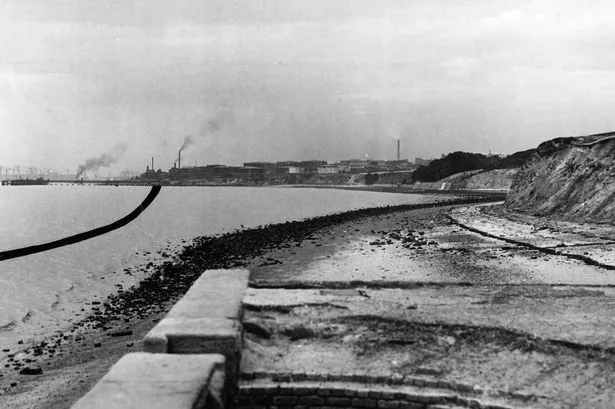If you grew up in Dingle up until the 1960s, chances are you'll remember 'the Cazzy.'
The Cast Iron Shore, known as the Cazzy for short, was a stretch of shoreline in South Liverpool which extended from Dingle Point to Otterspool Promenade. Children spent their summers playing at the beach from the 1800s up until the early 1960s, when it disappeared with the extension of the promenade.
An article in the Liverpool Daily Post from August 16, 1916, said: "One of the favourite "seaside" resorts at present is the "Cast Iron Shore" at Aigburth, where mothers and children gather in large crowds every afternoon and evening."
The article described at the time how "the only noises heard on the shore are the joyous cries of the children, the lapping of the waves and occasionally, the barking of a dog enjoying himself by a swim and a run. In brief, the place is a temporary paradise."
READ MORE: Try Liverpool Echo Premium for 99p with no ads, fun puzzles and brilliant new features
Gerry Marsden and members of the Beatles are among those to have played at the Cazzy as children. The Beatles even referenced the beach in their song 'Glass Onion' in 1968.
In an interview with the Independent in 1994, the late Gerry and the Pacemakers star Gerry Marsden said: "I used to go down to the Cazzy (Cast Iron Shore) with mum and swim in the river. When you took a dip in those days you came out with so much oil over you, you were more likely to catch fire than get a sun tan."
Historian John Harrison, who grew up in Dingle, also has happy memories of playing with his siblings at the Cazzy in the last 1950s. John told the ECHO: "The beach was a fantastic place for people to go to when we were kids growing up in the Dingle.
"All the kids from the Dingle went down there. That was our playground.
"We had Sefton Park, Princess Park to play but when we were 10 or 11 we would go down to the Cazzy. We didn’t have computers or things like that.
"We had to make our own games, jumping on and off barges. We used to play there on the swings and fall in the mud."
The name for the Cazzy is said to have come from the construction of St Michael's Church, which was partly made out of cast iron by John Cragg, the owner of the Mersey Iron Foundry, between 1813 and 1815. A letter in the Liverpool Daily Post dated March 22, 1915, said the beach was once known as the "Shore by the Cast Iron Church", before this was shortened to "Cast Iron Shore."
However, others believe the Cazzy gained its name due to the presence of the iron foundry, with excess iron being dumped on the beach and staining the sand with rust residue.
Joan Major, originally from Lark Lane and living in Ainsdale, recalls collecting lost cargo that had been dropped by passing ships at the Cazzy in the 1950s and sharing it out between her friends.
Joan told the ECHO: "In the summer we would take our buckets and spades, swimming costumes, a few butties and bottles of water and probably spend the day there.
"We were about seven or eight but that was quite normal in those days, we never heard of stranger danger. Children were free to roam. Our entrance to the Cazzy was at the bottom of Southwood Road, just past the railway station.
"It was quite different then to how it is now. You went through a small gate into a waste ground, which led onto the rocks and an incline down to the shore. Nothing was built there and there were no roads.
"The sand was great because it was a rare treat if we were ever actually taken to the real seaside like Southport or Hoylake." As cargo boats headed past the Cazzy to the docks, Joan said: "Sometimes a crate would topple off and eventually wash up on the beach.
"We would be delighted when we had such a find and there was great excitement while we tried to open them to see what was inside. It was wonderful if it was fruit – oranges and bananas were the best because we rarely had the opportunity to get fresh fruit.
"Our haul was divided up and taken back home to be shared between our neighbours. Sometimes it was just boring stuff like machine parts, we just left them. They were of no interest to us. If we told the adults there were crates, they might go down to see what was in them."
Do you remember the Cazzy? Share your memories in the comments below.
Don't miss the biggest and breaking stories by signing up to the Echo Daily newsletter here

